Travelling Tips
AUSTRALIA
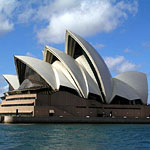
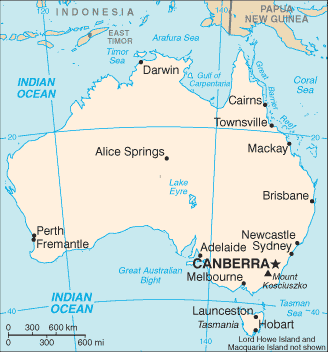
Summary: Australia has the distinction of being the world’s smallest continent and also the world’s sixth largest country and lies between the Indian and Pacific Oceans, with a terrain that is mostly deserts with low plateaus and fertile plains in the southeastern corner of the country. Australia settled around 40,000 years ago and virtually untouched until Captain James Cook claimed it in 1770 for Great Britain and new colonies arrived through the late 18th and 19th centuries, and the country now has a world-class economy based on international trade, balancing technological, manufacturing and agriculture sectors with strong tourism while protecting the Great Barrier Reef.
Capital: Canberra
Time Zone: UTC + 10
Population: 21,007,310
Languages: English, Native languages
Power: 230 V, 50 Hz
Currency: Australian Dollar - Currently 1 AUD = 1.0231 USD $
Climate: Australia is generally arid or semi-arid, with a more temperate climate in the south and east, and more tropical conditions in the northern areas. The Doctor is a tropical sea breeze that comes regularly on the western coast during the summer. - Currently 84°, Unknown
Warne - Australia 'favorites' for Ashes win - CNN - Jul 07 9:32 AM
Australia Considers Ban on People Climbing Uluru, or Ayers Rock - Bloomberg - 18 minutes ago
Australia & England set for Ashes - BBC News - 27 minutes ago
Australia presses China to explain Rio detentions - Reuters via Yahoo! News - 1 hour, 58 minutes ago
Australia May Keep Key Rate at 3% for Third Month (Update1) - Bloomberg - 2 hours, 19 minutes ago
Destinations
 Canberra: Canberra, born in 1908, is the planned capital of the country and sits about halfway between the country’s largest cities of Melbourne and Sydney and has all the features of a great capital city. The parliament buildings, the Mint and the National Gallery of Australia are all worth a walk-through for a day, as are the natural highlights which include the manmade Lake Burley Griffin, the New South Wales mountains, and the nearby Namadgi National Park.
Canberra: Canberra, born in 1908, is the planned capital of the country and sits about halfway between the country’s largest cities of Melbourne and Sydney and has all the features of a great capital city. The parliament buildings, the Mint and the National Gallery of Australia are all worth a walk-through for a day, as are the natural highlights which include the manmade Lake Burley Griffin, the New South Wales mountains, and the nearby Namadgi National Park. Sydney: Sydney is perhaps best known for the profile of its famous Opera House, and the oldest and most powerful city in the country, while still holding the galleries and shopping needed for a good destination. Spend a day walking through the Taronga Zoo and the Botanic Gardens to see some of the flora and fauna that make Australia unique, an evening in the Rocks district near Sydney Harbor with cobblestone streets, clubs and shops to enjoy the nightlife, and the next day spent at the beaches of Bondi make the experience special.
Sydney: Sydney is perhaps best known for the profile of its famous Opera House, and the oldest and most powerful city in the country, while still holding the galleries and shopping needed for a good destination. Spend a day walking through the Taronga Zoo and the Botanic Gardens to see some of the flora and fauna that make Australia unique, an evening in the Rocks district near Sydney Harbor with cobblestone streets, clubs and shops to enjoy the nightlife, and the next day spent at the beaches of Bondi make the experience special. The Great Barrier Reef: One of the world’s seven natural wonders lies off the northeastern coast of the continent and is known for both the great water activities off the nearby shores, the splendid display of life under the water, and the efforts to which the government goes to preserve the coral reef – the world’s largest living structure. There is no end to boating or diving trips, both scuba and snorkeling, that will be available from Cairns, the main base of operations for water exploration in Queensland.
The Great Barrier Reef: One of the world’s seven natural wonders lies off the northeastern coast of the continent and is known for both the great water activities off the nearby shores, the splendid display of life under the water, and the efforts to which the government goes to preserve the coral reef – the world’s largest living structure. There is no end to boating or diving trips, both scuba and snorkeling, that will be available from Cairns, the main base of operations for water exploration in Queensland. Melbourne: Melbourne may play second fiddle to Sydney for size and reputation, but it is home to Victorian architecture and some of the country’s best music scene and nightlife. Although the wineries in the Dandagong Hills on the outskirts of the city have made this region the wine center of the country, the Victorian Arts Centre will take at least half a day wandering through the complex of art galleries and theatres, the Royal Melbourne Zoo and Captain Cook’s cottage, the home of the famous explorer, are also both good places to stop by, and afterwards, the cafes and pubs, which often have some of the wine and live music which helped make Australia famous.
Melbourne: Melbourne may play second fiddle to Sydney for size and reputation, but it is home to Victorian architecture and some of the country’s best music scene and nightlife. Although the wineries in the Dandagong Hills on the outskirts of the city have made this region the wine center of the country, the Victorian Arts Centre will take at least half a day wandering through the complex of art galleries and theatres, the Royal Melbourne Zoo and Captain Cook’s cottage, the home of the famous explorer, are also both good places to stop by, and afterwards, the cafes and pubs, which often have some of the wine and live music which helped make Australia famous. Perth: On the opposite side of the country, about 2750 miles from the capital Canberra and other major cities, Perth offers the unique spirit of the outback for the visitor. Among the places to see are Fremantle, the nearby port called Freo by the locals and home to colorful colonial architecture, the Fremantle Market and the very nice Kings Park, and Cottesloe, the home of beaches and the Indiana Tea House. Many visitors take a two week train trek from Sydney, through the outback to Ayer’s Rock, properly known as Uluru by locals and best visited in either the early morning or evening for its sun-colored reddish hue, and continuing to Perth over a nearly two week journey.
Perth: On the opposite side of the country, about 2750 miles from the capital Canberra and other major cities, Perth offers the unique spirit of the outback for the visitor. Among the places to see are Fremantle, the nearby port called Freo by the locals and home to colorful colonial architecture, the Fremantle Market and the very nice Kings Park, and Cottesloe, the home of beaches and the Indiana Tea House. Many visitors take a two week train trek from Sydney, through the outback to Ayer’s Rock, properly known as Uluru by locals and best visited in either the early morning or evening for its sun-colored reddish hue, and continuing to Perth over a nearly two week journey.Tips
High Heat: Seasons are reversed from countries in the northern hemisphere, so late November to late February is the high summer. Trekking through the outback is popular, but keep the temperature in mind and drink extra fluids to avoid dehydration, which is common among newly landed tourists that run and quickly start exploring.
Darwin: Kangaroos, koalas, dingos and platypuses share time with the kookaburra and the wallaby as some of the indigenous and exotic animals that evolved on this continent, which has been isolated long enough to have these animals uniquely develop, so see them at a zoo to believe them.
When To Visit: Summer is the best time to visit for the beaches and the dry trekking through the outback, although it gets rainier and humid during that same period in the north. Skiing in winter, from June to August, is great, especially since many ranges are close to the major cities of Perth, Sydney and Canberra. January is the best time to visit Sydney, for the fireworks, street theater and open-air concerts at the Festival of Sydney
Food: Many Australian dishes have European or British roots, including roast beef, vegetable and meat pies, and variations on themes like kebabs with kangaroo meat or crocodile steak. Other international styles are available in cities and towns for other tastes, but although you may not want to try the vegemite, a salty spread for bread or toast, the light meringue cakes called pavlovas are fantastic. Note that Australia is the world’s largest producer of beef.
Phrases: Called Oz by friends and foes alike, Australians have a slang that may take your attention to catch, from being true blue, or really Australian, to having a blue, or an argument, through to the differences between an ocker, an uncultured Aussie that likes women, sports and beer, and the outback, the remote central parts of the country.
Tipping: Although tipping isn’t as standard in the smaller towns, follow standard tipping rules in the cities for an extra 10% on your bill, and round your taxi fare up to the next dollar up.
CHINA

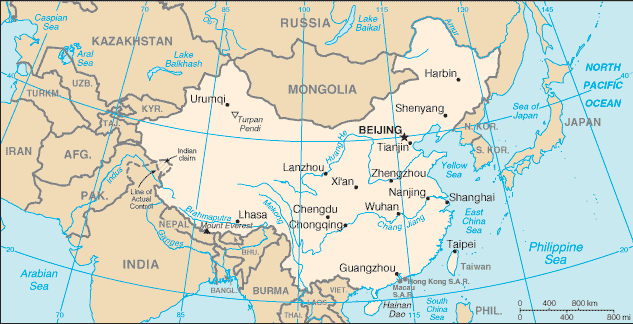
Summary: Located in eastern Asia between North Korea and Vietnam, China, also referred to as the People's Republic of China, has been a leading culture for millennia, and continues to play a role in the world economy and political sphere, in part because it is the world’s forth largest country, behind Russia, Canada and the US, and in part because it is the second largest economy after only the US. With a terrain that is mostly mountains, plateaus, and deserts in the west, plains and hills in the east, and the world’s tallest peak Mount Everest on the border with Nepal, tourism has been growing as the country moves from a centrally planned economy to more of a market- oriented economy.
Capital: Beijing
Time Zone: UTC+8
Population: 1,330,044,544
Languages: Chinese or Mandarin, Cantonese, Shanghaiese, Fuzhou, Hokkien-Taiwanese, Xiang, Gan, Hakka dialects
Power: 220 V, 50 Hz
Currency: Yuan - Currently 1 CNY = 0.1571 USD $
Climate: China's climate is extremely diverse and ranges from tropical in the south to subarctic in the north. - Currently 38º, Mostly Cloudy ![]()
China signals may launch economic stimulus package - Reuters via Yahoo! News - Nov 07 12:19 PM
Abbott wins short program at Cup of China - AP via Yahoo! News - Nov 07 10:48 AM
China Ministry Plans 30 Billion Yuan Bonds, Morning Post Says - Bloomberg - Nov 07 6:05 PM - Reuters via Yahoo! News - 2 hours, 49 minutes ago
China August trade surplus a record high of 28.7 bln dlrs: govt - AFP via Yahoo! News - 1 hour, 32 minutes ago
Destinations
 Beijing: Beijing, China’s capital, is the goal for most tourists as it serves to familiarize tourists with the country and culture while also serving as a jumping point to much of the countryside. The Temple of Heaven Park, the Summer Palace, or Yiheyuan, the Forbidden City, also known as the Imperial Palace Museum, and the Lama Temple, are among the dozen or more breathtaking sights in the city. About 50 miles outside the city is the iconic symbol of China: the Great Wall. Begun in the 7th century BC and now extending at least 4,500 miles, the Great Wall of China stands on average 25 feet high and almost 20 wide at the top and is segmented by more than 10,000 towers, and while it is not truly either visible from the moon nor the only human structure visible from space (multi-lane highways are much wider) it is an absolute marvel, and a must for a half-day trip or longer.
Beijing: Beijing, China’s capital, is the goal for most tourists as it serves to familiarize tourists with the country and culture while also serving as a jumping point to much of the countryside. The Temple of Heaven Park, the Summer Palace, or Yiheyuan, the Forbidden City, also known as the Imperial Palace Museum, and the Lama Temple, are among the dozen or more breathtaking sights in the city. About 50 miles outside the city is the iconic symbol of China: the Great Wall. Begun in the 7th century BC and now extending at least 4,500 miles, the Great Wall of China stands on average 25 feet high and almost 20 wide at the top and is segmented by more than 10,000 towers, and while it is not truly either visible from the moon nor the only human structure visible from space (multi-lane highways are much wider) it is an absolute marvel, and a must for a half-day trip or longer. Shanghai: Shanghai is China’s largest city with more than 17 million living in the core, and one of the world’s top ten most populated cities, however, recent transformations are working to make it China’s most green as well. Some of its areas are popular from the early 20th century, and still hold their colonial charm, including the Bund, the brightly lit riverfront and nightlife area, and Frenchtown, a little further away. Traditional Chinese temples and gardens are scattered throughout the city.
Shanghai: Shanghai is China’s largest city with more than 17 million living in the core, and one of the world’s top ten most populated cities, however, recent transformations are working to make it China’s most green as well. Some of its areas are popular from the early 20th century, and still hold their colonial charm, including the Bund, the brightly lit riverfront and nightlife area, and Frenchtown, a little further away. Traditional Chinese temples and gardens are scattered throughout the city. Guangzhou: Guangzhou is called the City of Flowers because it is China’s largest city in the south and is subtropical. Qingping Market, Yuexiu Park and Guangxiao Temple can give you a taste for the area, but also try to see the Temple of the Six Banyan Trees, one of the most famous Buddhist temples. Guangzhou is good point to visit because it is close to Hong Kong and Macau and has the nearby Yingxi Mountians and Yangyan Caves are close to Yangshan, about 170 miles away, and Longgong caves and Huangguoshu Falls are much further away, a little more than 500 miles near Guiyang but are worth the trip.
Guangzhou: Guangzhou is called the City of Flowers because it is China’s largest city in the south and is subtropical. Qingping Market, Yuexiu Park and Guangxiao Temple can give you a taste for the area, but also try to see the Temple of the Six Banyan Trees, one of the most famous Buddhist temples. Guangzhou is good point to visit because it is close to Hong Kong and Macau and has the nearby Yingxi Mountians and Yangyan Caves are close to Yangshan, about 170 miles away, and Longgong caves and Huangguoshu Falls are much further away, a little more than 500 miles near Guiyang but are worth the trip. Tibet: Tibet has been known as Shangri La and the Rooftop of the World, and although travel permits are difficult to obtain, this is a strong tourist draw. Lhasa, the capital of the region, has streets of stalls and pilgrims, and one of the most sacred of Buddhist symbols, the Jokhang temple, dedicated to the first Buddha. Another must-see is the Potala Palace a short walk away, the home of the Dalai Lama, and both of these buildings date to the 7th century BC. For eco-tourists and mountain climbers alike, Qomolangma, better known as Mount Everest, the massive Qomolangma Nature Preserve stretching from its feet to shoulders, and the Everest Base Camp are popular destinations if you hike or drive the way over.
Tibet: Tibet has been known as Shangri La and the Rooftop of the World, and although travel permits are difficult to obtain, this is a strong tourist draw. Lhasa, the capital of the region, has streets of stalls and pilgrims, and one of the most sacred of Buddhist symbols, the Jokhang temple, dedicated to the first Buddha. Another must-see is the Potala Palace a short walk away, the home of the Dalai Lama, and both of these buildings date to the 7th century BC. For eco-tourists and mountain climbers alike, Qomolangma, better known as Mount Everest, the massive Qomolangma Nature Preserve stretching from its feet to shoulders, and the Everest Base Camp are popular destinations if you hike or drive the way over. Taiwan: A large island off the Chinese mainland, Taiwan has been working to resolve its status with China over the past 60 years. From Taipei, the capital, in the north, with Taipei 101, the tallest building in the world at 1,671 feet and the heart of Taiwan nestled in a valley of the Danshui River, to Tainan on the southwest coast, a more traditional city with Taoist and Buddhist cultures filled with temples and sights like the Mito Temple with the statue of Kuanyin with a thousand arms, the East Mountain Temple considered to be a communication point with the dead, and Lu Erh Men on the edge of town, often the site of firework shows, Taiwan alone can be worth spending a week exploring.
Taiwan: A large island off the Chinese mainland, Taiwan has been working to resolve its status with China over the past 60 years. From Taipei, the capital, in the north, with Taipei 101, the tallest building in the world at 1,671 feet and the heart of Taiwan nestled in a valley of the Danshui River, to Tainan on the southwest coast, a more traditional city with Taoist and Buddhist cultures filled with temples and sights like the Mito Temple with the statue of Kuanyin with a thousand arms, the East Mountain Temple considered to be a communication point with the dead, and Lu Erh Men on the edge of town, often the site of firework shows, Taiwan alone can be worth spending a week exploring.Tips
Costs: Locals will still look to charge foreigners more than locals for the same product or service. In short, ask before you buy, or know the real value of what you're paying for in advance.
Conservative: China is still considered in part a closed and conservative society: avoid overt displays of anger, don’t take pictures of the military, and steer away from political or religious debates.
Language: English is rarely spoken in China, so learn a few phrases in Mandarin as the most widely accepted local tongue and you will find the locals very friendly.
When To Visit: Chinese New Year, in late January or early February, is the busiest time for accommodations and festivals, as over a billion locals plus tourists want to celebrate together at the parades.
Food: There are several groups of cuisine based on the region of China. Beijing is based on steamed bread and noodles, Cantonese is based on gently cooked or seared vegetables and meat, Shanghainese is based on spare ribs and spiced sauces, and Sichuan is even spicier with more chili. Tea, pop and especially beer are the most available drinks, while maotai, made from sorghum, is the strongest spirit that can also strip paint off the nearest wall.
Phrases: Yes = dui (pronounced: dway), no = bu dui (pronounced: boo dway), hello = ni hao (pronounced: nee how), please = qing (pronounced: cheeing), thank you = xie xie (pronounced: syeh syeh)
Tipping: Tipping is not customary and should be discouraged.
NEWZEALAND
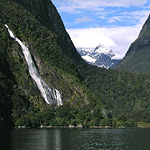
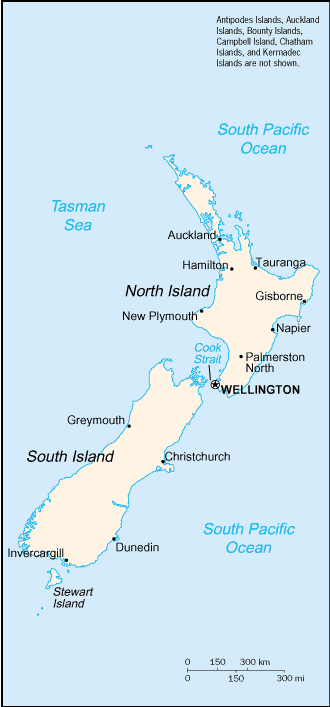
New Zealand sits in the South Pacific to the southeast of Australia and is predominantly mountainous with some large coastal plains with 20% of the population living in rural regions. Working to address the Maori grievances has been an issue for New Zealand, who have lived on the islands for around 1200 years, while the government has had success in other areas and in 20 years has moved the country from a slow agrarian mold to a modern market economy driven by tourism, manufacturing and technology, and agriculture.
Capital: Wellington
Time Zone: UTC + 12
Population: 4,173,460
Languages: English, Maori
Power: 230 V, 50 Hz
Currency: New Zealand Dollar - Currently 1 NZD = 0.7802 USD $
Climate: New Zealand has a temperate climate with sharp regional contrasts due primarily to the mountains segregating local microclimates, however, most regions are warmer during the summer, from November to April. - Currently 59°, Unknown
Travelocity officially launches its site in New Zealand - eyefortravel.com - 7 minutes ago
New Zealand eyes borders for stolen medals - UPI - Dec 03 7:23 AM
New Zealand Will Leave Benchmark Rate at 8.25%, Economists Say - Bloomberg.com - Dec 03 1:05 PM
New Zealand Dollar Declines as U.S. Concerns Spur Carry Unwind - Bloomberg.com - 1 hour, 41 minutes ago
Englishman Finch wins New Zealand Open - UPI - Dec 02 1:08 PM
Destinations
 Wellington: Wellington, the nation's harbour capital at the southern tip of North Island, made more famous by the recent epic The Lord of the Rings, which was filmed in part in and around the capital. The Parliament buildings, one of which is known affectionately as the Beehive, and the Old Government Building, made entirely of wood, are popular picture spots, while the Te Papa museum, zoo and shopping along Cuba Street will take more time; of course, you could always hike up to the top of Mount Victoria and enjoy the views of the capital.
Wellington: Wellington, the nation's harbour capital at the southern tip of North Island, made more famous by the recent epic The Lord of the Rings, which was filmed in part in and around the capital. The Parliament buildings, one of which is known affectionately as the Beehive, and the Old Government Building, made entirely of wood, are popular picture spots, while the Te Papa museum, zoo and shopping along Cuba Street will take more time; of course, you could always hike up to the top of Mount Victoria and enjoy the views of the capital. Auckland: Auckland is near the north of North Island and has become the country's economic center with a day and nightlife to keep anyone busy. While here, see the Auckland Museum which has large collection on human and natural history, the National Maritime Museum which exposes both European and Maori vessels, and Sky Tower, which at 1076 feet, is the tallest building in the southern hemisphere and has two revolving restaurants to help you enjoy the view. 55 miles to the north is the Great Barrier Island, a large nature reserve with natural hot springs, trails and kauri forests.
Auckland: Auckland is near the north of North Island and has become the country's economic center with a day and nightlife to keep anyone busy. While here, see the Auckland Museum which has large collection on human and natural history, the National Maritime Museum which exposes both European and Maori vessels, and Sky Tower, which at 1076 feet, is the tallest building in the southern hemisphere and has two revolving restaurants to help you enjoy the view. 55 miles to the north is the Great Barrier Island, a large nature reserve with natural hot springs, trails and kauri forests. Christchurch : Christchurch, in South Island on the River Avon, hails its English past with gothic architecture, rich parks and colonial history. Stop and enjoy Cathedral Square, considered the heart of the city, the International Antarctic Centre, a simulator next to the airport and a hot spot with tourists, or the Willowbank Wildlife Reserve, which protects and helps visitors experience and understand Kiwi nature.
Christchurch : Christchurch, in South Island on the River Avon, hails its English past with gothic architecture, rich parks and colonial history. Stop and enjoy Cathedral Square, considered the heart of the city, the International Antarctic Centre, a simulator next to the airport and a hot spot with tourists, or the Willowbank Wildlife Reserve, which protects and helps visitors experience and understand Kiwi nature. Rotorua: Rotorua attracts a steady stream of tourists to see the traditional Maori lifestyle and culture, including traditional hangi feasts, facial war markings and plays, and the ritual dancing challenges. While geothermal and rainforest treks are abundant, some of the best sights include the Rotorua Museum, a beautiful red-tiled building which houses some of the history of the Arawa and Maori peoples, and the Te Whakarewarewa Thermal Reserve, with both thermal mud pools and the New Zealand Maori Arts and Crafts Institute for visitors.
Rotorua: Rotorua attracts a steady stream of tourists to see the traditional Maori lifestyle and culture, including traditional hangi feasts, facial war markings and plays, and the ritual dancing challenges. While geothermal and rainforest treks are abundant, some of the best sights include the Rotorua Museum, a beautiful red-tiled building which houses some of the history of the Arawa and Maori peoples, and the Te Whakarewarewa Thermal Reserve, with both thermal mud pools and the New Zealand Maori Arts and Crafts Institute for visitors.Tips
Food: New Zealand dishes tend to blend British with Maori styles using native fruits and vegetables, like kiwi and the sweet potato-like kumara, fish, and muttonbird, a bird which ironically tastes like fish. Try a traditional Maori hangi, a pit-cooked meal of fish or meat and vegetables, or the more british pavlova, a whipped cream and meringue dessert.
When To Visit: June to August are the best times to visit for skiing in the many resorts, and November to March are best for wandering around the countryside, however, Christmas is the peak tourist season, making a two to three week period where accommodations can dry up.
Tipping: Tipping is still developing into common practice, however, add up to 10% for great service at a restaurant.
HONG KONG
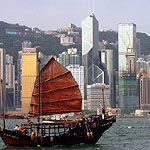

Population: 7,018,636
Languages: Chinese, English
Power: 220 V, 50 Hz
Currency: Hong Kong Dollar - Currently 1 HKD = 0.1286 USD $
Climate: Hong Kong has a tropical monsoon climate, with cool and humid winters, hot and rainy springs and summers, and warm and sunny falls. - Currently 84º, Partly Cloudy Recent Headlines:
Asian Money Market Rates Fall on Japan, Hong Kong Guarantees - Bloomberg - 34 minutes ago
Hong Kong Backs Its Banks - New York Times - Oct 14 4:08 PM
Financial turmoil more serious than 1997 crisis: Hong Kong chief- AFP via Yahoo! News - 2 hours, 8 minutes ago
Hong Kong chief executive aims for steady path in economic storm - AFP via Yahoo! News - 14 minutes ago
Landslide kills two in Hong Kong: report - AFP via Yahoo! News - Jun 07 11:22 AM
Destinations
 Hong Kong : Hong Kong is a densely populated city with towering buildings built up to the edge of Victoria Harbor, but placing parks and temples to still be considered one of Asia’s greenest cities. The many shopping and business centers packed together, like the must-see Hollywood Road and Upper Lascar Row, and the Edwardian Western Market, can keep many busy, while others may want to enjoy a quick sail from the yacht club at Causeway Bay or take a walk through Victoria Park.
Hong Kong : Hong Kong is a densely populated city with towering buildings built up to the edge of Victoria Harbor, but placing parks and temples to still be considered one of Asia’s greenest cities. The many shopping and business centers packed together, like the must-see Hollywood Road and Upper Lascar Row, and the Edwardian Western Market, can keep many busy, while others may want to enjoy a quick sail from the yacht club at Causeway Bay or take a walk through Victoria Park. Kowloon : Kowloon is the mainland district of Hong Kong and features some of the nicest amenities offered, including the Flower, Jade and Temple Street Night Markets and noodle shops all the way to exquisite shopping and dining. You can also head to Nathan Road, once disliked and now adored as the Golden Mile lit with neon, in the Tsimshatsui area for less costly shopping and drinks, or just take a walk though Kowloon Park, also on Nathan Road.
Kowloon : Kowloon is the mainland district of Hong Kong and features some of the nicest amenities offered, including the Flower, Jade and Temple Street Night Markets and noodle shops all the way to exquisite shopping and dining. You can also head to Nathan Road, once disliked and now adored as the Golden Mile lit with neon, in the Tsimshatsui area for less costly shopping and drinks, or just take a walk though Kowloon Park, also on Nathan Road. Victoria Peak: Victoria Peak, at 1,800 feet, can give you some great vistas and offer some of the best chances to grab a picture of Hong Kong as a whole. Visiting in the evening is best for picture-taking, but visiting at night can be stunning as the city lights up. Local restaurants and shops can keep you busy while you are here, and though you can take a tram up here for the easiest way up, there are hiking trails that loop around the mountain top for those that want to stretch their legs and minds, then take the bus back down for the views of the typhoon harbors.
Victoria Peak: Victoria Peak, at 1,800 feet, can give you some great vistas and offer some of the best chances to grab a picture of Hong Kong as a whole. Visiting in the evening is best for picture-taking, but visiting at night can be stunning as the city lights up. Local restaurants and shops can keep you busy while you are here, and though you can take a tram up here for the easiest way up, there are hiking trails that loop around the mountain top for those that want to stretch their legs and minds, then take the bus back down for the views of the typhoon harbors.Tips
Local Customs: You may notice bits of both Chinese and British culture blending together uniquely in Hong Kong. In particular, toasts are a common part of meals, so you may be asked to say a few words while eating with locals.
When To Visit: Although high summer, June to August, can be hot and rainy, late fall to winter, October to December, can be very nice and temperate, and you should find better rates for accommodations during both fall and spring. The Chinese New Year in late January or early February can make finding a room difficult.
Phrases: Yes = dui (pronounced: dway), no = bu dui (pronounced: boo dway), hello = ni hao (pronounced: nee how), please = qing (pronounced: cheeing), thank you = xie xie (pronounced: syeh syeh)
Tipping: Hotels, bars and restaurants will normally include a 10% service charge, follow standard tipping rules and add an additional 5% for good service, and give an extra 5% - 10% for taxi fares.
UZBAKISTAN
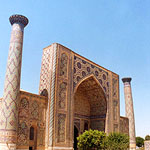
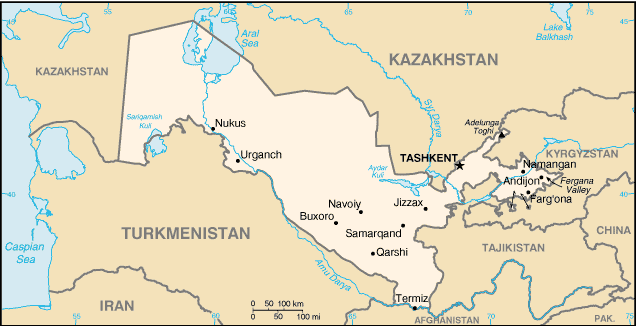
Capital: Tashkent
Time Zone: UTC + 5
Population: 27,345,026
Languages: Uzbek, Russian, Tajik
Power: 220 V, 50 Hz
Currency: Uzbekistani Sum - Currently 1 UZS = 0.0006 USD $
Climate: Uzbekistan has a mostly mid-latitude desert climate, with long, hot summers, and mild winters, and a semi-arid grassland region in eastern part of the country. - Currently 55º, Mostly Cloudy Recent Headlines:
Hard to stomach for Socceroos - The Star - Sep 20 3:47 PM
Neill wary of desperate Uzbeks as Socceroos welcome back Mr Chips - Bunbury Mail - Sep 20 3:05 AM
US Military Deaths In Afghanistan Region At 524 - CBS News - Sep 20 5:24 AM
Annual U.S. Report Assesses Religious Freedom Worldwide - Payvand Iran News - Sep 20 8:57 AM
Bahrain and Uzbekistan stay perfect, Japan gets win in qualifiers - International Herald Tribune - Jun 02 8:09 AM
Destinations
 Tashkent: Tashkent has an old world feel and yet is the country’s urban center despite surviving a large earthquake in 1966. You can spend a day exploring the city’s sight, including the Kaffali- Shash Mausoleum, the handicrafts at the Alaiski Bazaar, the narrow cobblestone streets of eski shakhar, the old part of the city, the 16th century Kukeldash Medressa, an Islamic academy, and the Museum of Fine Arts which has a collection of statues and murals dating back more than a thousand years.
Tashkent: Tashkent has an old world feel and yet is the country’s urban center despite surviving a large earthquake in 1966. You can spend a day exploring the city’s sight, including the Kaffali- Shash Mausoleum, the handicrafts at the Alaiski Bazaar, the narrow cobblestone streets of eski shakhar, the old part of the city, the 16th century Kukeldash Medressa, an Islamic academy, and the Museum of Fine Arts which has a collection of statues and murals dating back more than a thousand years. Samarkand: Samarkand sits upon what was once the Silk Road between east and west and is the resting place of Timur, the crippled leader who controlled much of Europe in the 14th century and has a history dating back 5,000 years. The top sight would be Timur’s grave in the Guri-Emir and covered in jade, while Timur’s grandson made the Observatory of Ulug Beg, or Ulugbek, an early astronomical building, on one face of Registan Square with two other medressas, all decorated with beautiful tile and mosaics and dating as far back as the 15th century, while the Shahi Zinda is a beautiful mausoleum complex complete with arches, tombs and domes that shouldn't be missed.
Samarkand: Samarkand sits upon what was once the Silk Road between east and west and is the resting place of Timur, the crippled leader who controlled much of Europe in the 14th century and has a history dating back 5,000 years. The top sight would be Timur’s grave in the Guri-Emir and covered in jade, while Timur’s grandson made the Observatory of Ulug Beg, or Ulugbek, an early astronomical building, on one face of Registan Square with two other medressas, all decorated with beautiful tile and mosaics and dating as far back as the 15th century, while the Shahi Zinda is a beautiful mausoleum complex complete with arches, tombs and domes that shouldn't be missed. Bukhara: Bukhara is one of the best places to see a less Soviet influenced Uzbekistan, and has sights including the Labi-hauz, a pool-focused plaza dating to the 17th century, the Ulug Beg Madrasa, which was once the tallest buildings in Asia with the 148 feet Kalyan Minaret and served as a jumping point as punishment for criminals in the 12th century, and several ancient baths and markets. To the northeast is Khiva, worth a daytrip as legend holds Shem, a son of Noah, discovered a well here, and it has been populated ever since, and walking through the inner city, or Ichon Qala will reveal turquoise tiled mosaics, mosques and medressas.
Bukhara: Bukhara is one of the best places to see a less Soviet influenced Uzbekistan, and has sights including the Labi-hauz, a pool-focused plaza dating to the 17th century, the Ulug Beg Madrasa, which was once the tallest buildings in Asia with the 148 feet Kalyan Minaret and served as a jumping point as punishment for criminals in the 12th century, and several ancient baths and markets. To the northeast is Khiva, worth a daytrip as legend holds Shem, a son of Noah, discovered a well here, and it has been populated ever since, and walking through the inner city, or Ichon Qala will reveal turquoise tiled mosaics, mosques and medressas.Tips
Cash On Hand: Although banks are open Monday to Friday, credit cards and traveller's checks find little acceptance, so keep a supply of currency ready.
When To Visit: Spring, from April to June, and fall, from September to October, are the best times to visit Uzbekistan while avoiding the heat of summer and the cold of winter. Navruz, the festival of New Days, is typically held in late March and brings whole communities together to celebrate the coming of spring with games, fairs and traditional plays.
Food: The cuisine in Uzbekistan has a Middle Eastern and Indian influence, and kebabs and rice with seasonings are common, along with mutton stews, grilled meats, vegetables, breads and pastries. Seasonings tend to be more subtle than Indian, the tea is usually served black, and alcohol has not been outlawed in the country, so you will find locals drinking vodka at times of celebration or with guests.
Phrases: Yes = da, no = nyet, hello = privet, please = pozhalujsta, thank you = spasibo, to your health = na starovia, do you speak English? - govorite li vy po angliyski?
Tipping: Tipping is not prevalent in the country, although a 10% service charge may be included in your bill. Tour guides and drivers will expect a tip of a few dollars at the end of your trip.


